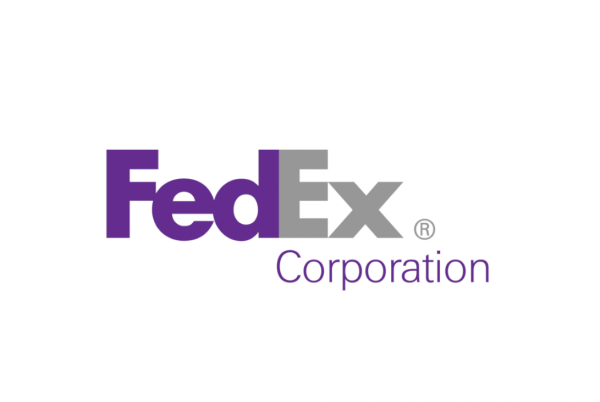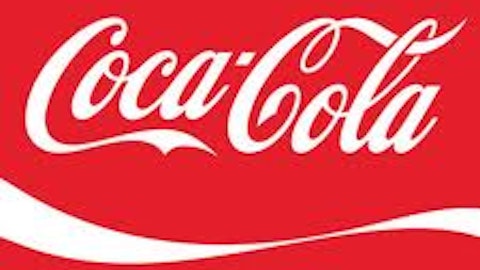On this day in economic and business history…
FedEx Corporation (NYSE:FDX) took off into business legend on April 17, 1973, when 14 Dassault Falcon 20s took off from Memphis International Airport. The successful delivery of 186 packages to 25 different cities was the first step toward realizing FedEx Corporation (NYSE:FDX) founder Fred W. Smith’s ambition to reshape the global air-freight distribution system. However, it was only a first step. The rest of the road would take FedEx to places no delivery company had been before. Before we dive into the FedEx story, let’s note that Smith’s ambition makes a worthy counterpoint to would-be entrepreneurs who dismiss the value of college: He first developed the idea for FedEx at Yale in the 1960s, compiling his thoughts into a term paper on the inefficiencies of the “modern” air transport system of that day.
Within two months of this first delivery, FedEx Corporation (NYSE:FDX) (then known as Federal Express) was already growing rapidly. Coverage of the company from June 1973 noted:
Each night, Federal Express’ jet fleet will pick up packages at more than 100 cities around the country and fly them into Memphis to the central sorting facility. There, a computer-controlled apparatus will sort the packages at the rate of 10,000 per hour. Seventy minutes after arriving, all packages can be en route to their destination aboard the same planes that brought them to Memphis.

The new hub-based delivery system Smith pioneered at FedEx was clearly working, but building such a national network was far from easy. The first two years pushed FedEx Corporation (NYSE:FDX) to its financial limits, and sometimes payroll was so stretched that paychecks had to be postdated and pilots occasionally bought jet fuel using their own personal credit cards. One famous story tells of Smith taking a trip to Las Vegas in 1974 and winning $27,000 playing blackjack just to make payroll at a time when the fast-growing but nearly bankrupt company was burning through $1 million every month because of the effects of the early-1970s oil price shocks on jet fuel. The hot hands proved to be a good omen: Smith raised another $11 million in venture capital funds shortly afterward to keep FedEx afloat.
FedEx gained another leg up on its patchwork competition when it succeeded in deregulating air cargo in 1977. Until that time, FedEx was restricted to smaller aircraft, such as Dassaults, but it was now free to use larger and more efficient craft, such as The Boeing Company (NYSE:BA) and Airbus commercial planes. Today, FedEx Corporation (NYSE:FDX) operates one of the largest fleets of The Boeing Company (NYSE:BA)-built aircraft in the world (not to mention the largest cargo airline fleet in the world and the fourth-largest airline fleet of any type), with nearly 250 Boeing and McDonnell-Douglas planes in service and more than 100 more scheduled for delivery. FedEx’s air fleet now travels roughly half a million miles every day.
FedEx went public in 1978 at $24 per share and attracted enormous attention, nearly doubling within its first month of trading. Still, even if you had bought at the $41 post-IPO high, you’d be sitting on a nice profit today: After five stock splits, one share has grown into 32 shares that have given 30-bagger returns to anyone who bought at $41. When the 1980s rolled around, FedEx was so far ahead of its competition that one local economist told Memphis Magazine that “it would take at least $300 million to take a shot at blowing Fred out of the water, and even then the bullet would probably miss.” FedEx Corporation (NYSE:FDX) reached its first billion-dollar revenue year in 1983, expanded to Europe and Asia in 1984, and by 1989 was the world’s largest all-cargo airline, a status it maintains to this day.
Galloping toward glory
The car-buying public first glimpsed the Ford Motor Company (NYSE:F) Mustang on April 17, 1964 at the New York World’s Fair. It was Ford Motor Company (NYSE:F)’s big counterstrike against the flood of small European sports cars entering the American market, a four-seater “pony car” to compete with stylish but flaky two-seaters from France, Italy, and Britain. These small cars might have been appealing, but they weren’t practical, and they weren’t very affordable, either. Ford Motor Company (NYSE:F) executives Lee Iacocca and Donald Frey decided to compete on these merits, hoping to carve out a niche of perhaps 100,000 sales per year.
American consumers were captivated. The Mustang quickly became one of Ford’s greatest success stories, its $2,300 price proving the perfect sweet spot for a rapidly growing suburban middle class. A million Mustangs sold within two years of its big reveal. Ford Motor Company (NYSE:F) smartly decided to keep this car in the public eye, and it has remained the only “pony car” type in continuous production since creating the category in 1964. It has also become Ford’s longest-running nameplate, edging out even the legendary Model T.
Between wealth and riches
The Dow Jones Industrial Average (Dow Jones Indices:.DJI) broke through the 3,000-point barrier on April 17, 1991. Its final closing level, 3,004.46, was a 287% gain from the beginning of the modern era’s incredible secular bull market and 290% away from that market’s ultimate peak. The 3,000-point barrier was, in many ways, a perfect halfway point in the market’s growth, between getting wealthy and really getting rich. And just as befits such a mark, there was a general sense of optimism for the future.
A mild recession gripped the United States then, partly a result of oil supply shocks from the Iraqi invasion of Kuwait but more a response to a long-running savings and loan crisis that would lead to a massive and ultimately unrecoverable bailout later in the year. Oil prices had only just returned to normal levels after rapidly doubling in the fall of 1990, and the bulls were in a triumphant mood.
James E. Cayne, president of Bear Stearns (yes, that Bear Stearns) said: “It’s historic, glorious, fantastic. … The people who forecast doom temporarily are wrong.” William A. Schreyer, chairman of Merrill Lynch, told The Washington Post, “The markets are saying that inflation is not going to be a factor, that the restructuring of corporate America is proceeding and that higher productivity and profitability will be a reality in 1992 and beyond.” The Post mentioned the Federal Reserve’s “easy money policy” as a reason for the rise in stock prices (sound familiar?), with lower interest rates driving investment dollars into stocks and away from interest-bearing savings vehicles. “The best time to invest in the market is [always] during the latter half of a recession,” said Equitable Capital Management executive Franklin Kennedy. Paine Webber executive Edward Kerschner told The New York Times that “lower interest rates boost stock prices,” calling the Fed’s strategy “the big ease.”
There would be no significant correction in the Dow’s upward course for another nine years. Investors had experienced the short, sharp crash of 1987 and the mild contraction of 1990, and they could now look forward to the longest uninterrupted bull market the Dow would ever see. Did investors expect such growth in the spring of 1991? If you were one of them, you likely made out very well indeed.
The article The Big Idea That Delivered a Business Legend originally appeared on Fool.com and is written by Alex Planes.
Fool contributor Alex Planes has no position in any stocks mentioned. The Motley Fool recommends FedEx and Ford. The Motley Fool owns shares of Ford.
Copyright © 1995 – 2013 The Motley Fool, LLC. All rights reserved. The Motley Fool has a disclosure policy.

